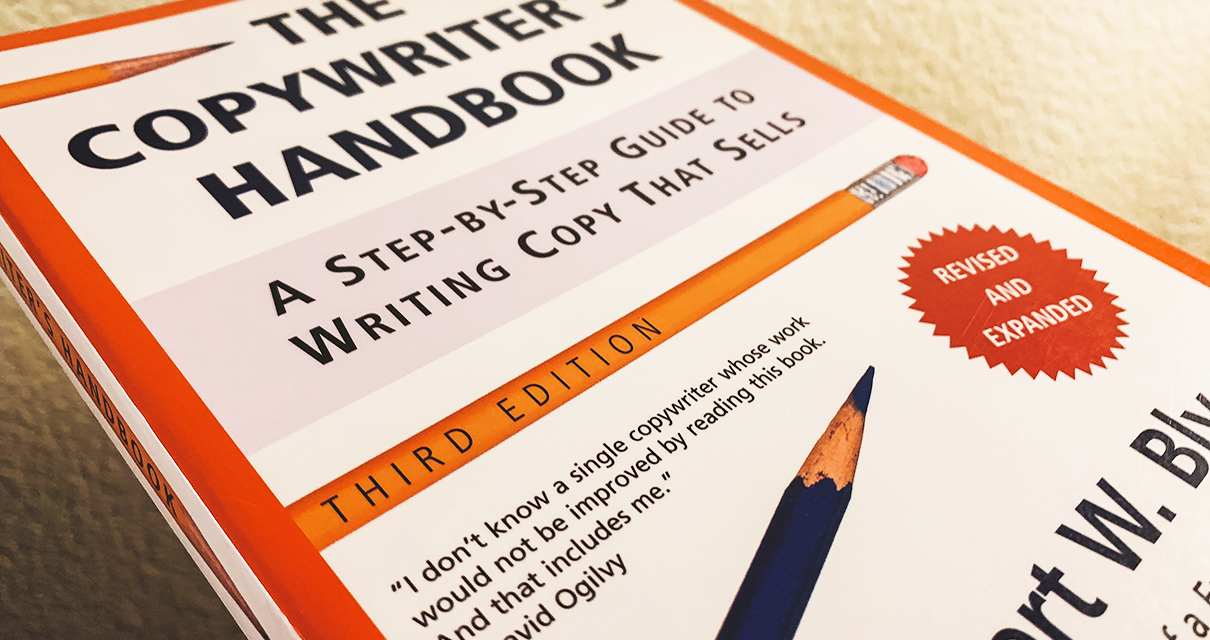The Copywriter’s Handbook by Robert W. Bly should be on the desk of anyone who works with copy—whether managers, marketers, or freelance writers.
Robert Bly writes such excellent copy! He’s a master at delivering succinct and helpful words while effortlessly guiding the reader towards a determined outcome. The more you work with the book and learn from what Robert points out, the more you’ll see his expertise bleed into your own copywriting.
The Copywriter’s Handbook will help you become a better marketer overall, whether you work with video scripts, create product newsletters for customer databases, or generate copy for website pages.
The book is in its fourth edition, although I own a copy of the third edition. It looks like I have a stocking-stuffer idea for Barrett—fourth edition, here I come!
A Few Things Learned from The Copywriter’s Handbook
- Use Digests and Reminders — When you use digests or simple, quick reminders in your copy, you help the reader consume information more effortlessly, and in turn, are then more likely to take action.
- Urgent, Unique, Ultra-Specific, Useful — Robert W. Bly uses “Urgent, Unique, Ultra-Specific, Useful” as criteria to ensure your copy remains pertinent and professional. Run your copy through these review criteria, dump anything that doesn’t fit the bill, and you’ll find your copy improving drastically.
- Ask the Question, “how can you help?” — To give yourself guidance for what you might write about and address in your copy, you can think to yourself, “How can you help?” Asking this question of self helps to direct what you might start putting down on paper. This is especially helpful if you’re battling writer’s block and feel like you’re struggling or don’t have words to put down.
- Include Numbers & Statistics — Simple but often forgotten! Including numbers and statistics in your copy will help grab the reader’s attention and add credibility to your writing.
- Be Time Specific — Being very specific when it comes to times, dates, and locations for physical or virtual events will help ease worries, answer questions, and address problems before they arise.
- Watch What Others Do — As a marketer, it’s crucial to keep an archive of other people’s work to learn from other people and serve as inspiration when needed. An easy way to source ideas is to use Google Images and search for whatever you’d like to see. For example, suppose I’m building a one-page sponsorship PDF for a client. In that case, I’ll often take a quick look through Google Images to get ideas for sponsorship benefit table design, contact info, and header/footer styling options.
- Structure Is Everything — When it comes to marketing material and copy for emails, your copy and paragraph’s structure is everything. Catch your reader’s attention in the very first sentence and let your first paragraph be a mini-version of the email’s complete offer and CTA purpose. The following paragraphs should offer proof, features, and benefits that support the first paragraph.
- Be Helpful, Friendly, and Informative — The public expects professional treatment in all dealings, so it’s essential to remain helpful, friendly, and informative in your writing. If your tone starts to feel too careless, you’re feeling unfriendly, or writing aimlessly, it can be helpful to take a quick break and come back to writing later.
Infuse your copy with these tips, and keep working with The Copywriter’s Handbook, and you’ll have surefire success. Additionally, remember that writing improvement comes from daily, consistent practice and reworking.
From annual reports to flyers to broadsides to invoice stuffers, there are examples of all tucked throughout the book.
Keep writing those blog posts, craft the perfect copy for your next marketing email, build beautiful sales pages that convert, and I’ll continue to write along with you in the process.
Also, remember, your copywriting is only as strong as your incentives included to commit an action.





